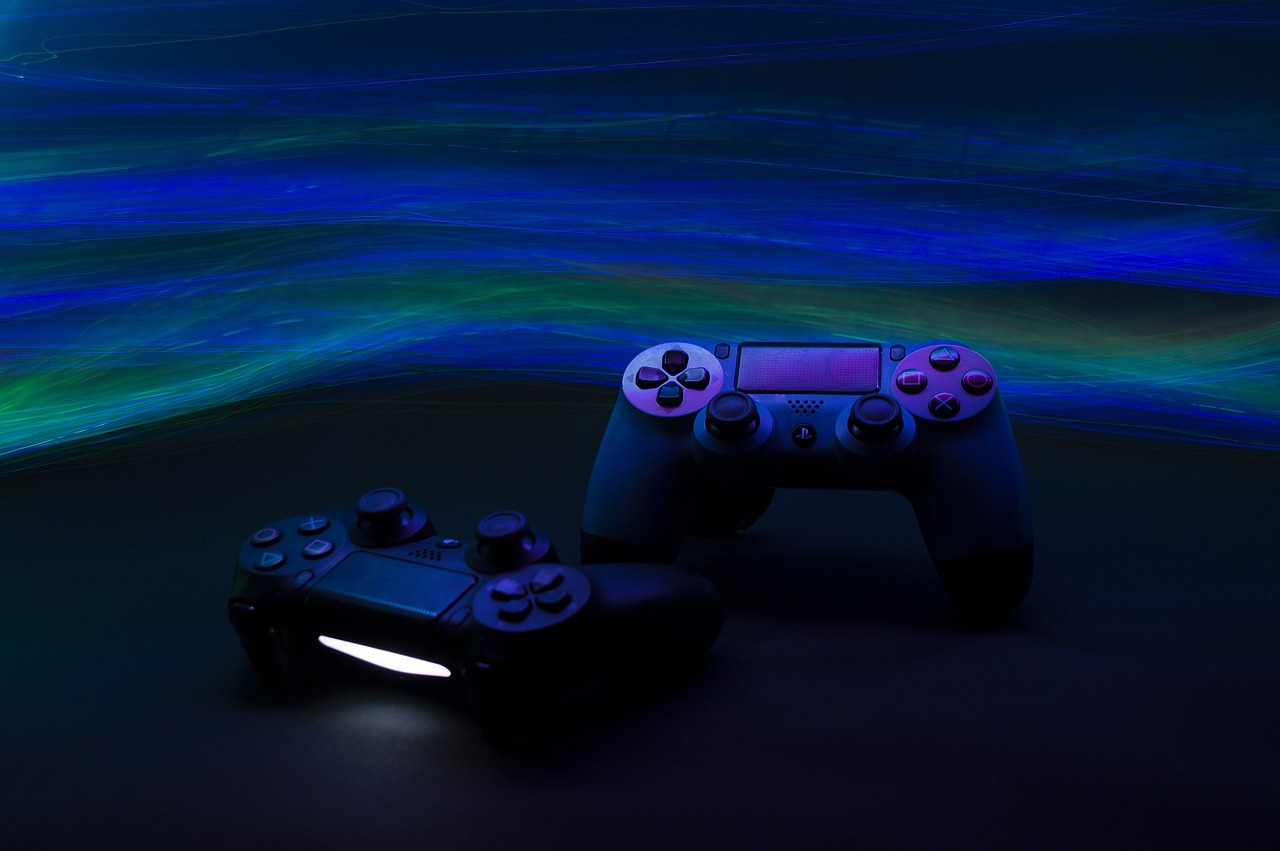Table of Contents
In the fast-paced world of gaming, every millisecond counts. Whether you’re navigating a treacherous battlefield, executing precision moves in a platformer, or making split-second decisions in a racing game, the responsiveness of your game controller can make all the difference between victory and defeat. This is where the crucial issue of latency and lag reduction comes into play. In this article, we will explore the significance of reducing latency and lag in game controllers and the innovative solutions that are improving the overall gaming experience.
In the fast-paced world of gaming, every millisecond counts. Whether you’re navigating a treacherous battlefield, executing precision moves in a platformer, or making split-second decisions in a racing game, the responsiveness of your game controller can make all the difference between victory and defeat. This is where the crucial issue of latency and lag reduction comes into play.
Latency and lag, often used interchangeably, refer to the delay between your physical input (pressing a button or moving a joystick) and the corresponding action taking place on the screen. In the context of gaming, these delays can be maddeningly frustrating and potentially ruin the gaming experience. Imagine trying to dodge an incoming projectile only to find your character reacting a split second too late due to lag. It’s a scenario all gamers want to avoid.
Reducing latency and lag has become a paramount concern for both game developers and hardware manufacturers. It’s not just about creating games that are visually stunning; it’s also about ensuring that the gameplay experience is smooth, precise, and immersive.
In this article, we will explore the significance of reducing latency and lag in game controllers and the innovative solutions that are improving the overall gaming experience. We’ll delve into:
Advanced Sensor Technology: Game controllers are now equipped with cutting-edge sensors that can detect even the slightest movement or input with remarkable accuracy. These sensors reduce the time it takes for your actions to be translated into the game, providing a more instantaneous response.
High-Performance Connectivity: The days of wired controllers are giving way to wireless technology that offers nearly imperceptible latency. Bluetooth and other wireless protocols have made it possible for gamers to enjoy a cable-free experience without sacrificing responsiveness.
Cloud Gaming: With the rise of cloud gaming services, some of the processing burden is shifted away from your local device to powerful data centers. This can significantly reduce input lag, as the rendering and processing are done remotely, allowing you to play high-end games on less powerful hardware.
Firmware and Software Optimization: Game controller manufacturers are constantly refining their firmware and software to minimize input lag. Updates can often lead to noticeable improvements in controller response time.
Cross-Platform Compatibility: Gamers are increasingly playing across various platforms, from consoles to PCs to mobile devices. Ensuring controllers work seamlessly across these platforms is another challenge, but it’s essential to maintain a consistent gaming experience.
By addressing these issues, the gaming industry is not only enhancing the gaming experience but also breaking down barriers to entry. Reduced latency and lag mean that gamers of all skill levels can enjoy smoother gameplay, making the world of gaming more inclusive and accessible. In the end, it’s a win-win for both players and the industry as a whole. So, let’s dive deeper into the technology behind these improvements and discover how they are reshaping the future of gaming.
Additionally, you can find further information on this topic by visiting this page: How to Fix Input Lag – Intel
The Battle Against Latency
Latency, in the context of gaming, refers to the delay between a player’s input and the corresponding action on the screen. It’s the time it takes for your controller to transmit your commands to the game and for the game to respond. While milliseconds may seem insignificant, in the world of gaming, they can be the determining factor in a match or mission.
High latency can result in frustrating experiences, such as missed shots in first-person shooters or failed combos in fighting games. It can also disrupt the immersive nature of games, making it feel like there’s a disconnect between the player and the virtual world. As games become increasingly complex and competitive, minimizing latency has become a top priority for both gamers and game developers.
If you’d like to dive deeper into this subject, there’s more to discover on this page: For those experiencing controller input lag on their Xbox Series X|S …

Understanding Lag
Lag is a closely related issue that exacerbates the problem of latency. Lag is often used to describe a situation where there is a noticeable delay between an action and its visual feedback on the screen. It can manifest as stuttering, freezing, or even a complete halt in gameplay. Lag can be caused by various factors, including network issues, server performance, and hardware limitations.
In the context of game controllers, lag can occur when wireless controllers communicate with a gaming console or PC. The wireless signal must travel from the controller to the device, and any delays in this transmission can lead to perceptible lag. To mitigate this, modern controllers and gaming systems are designed with low-latency wireless communication protocols.
Don’t stop here; you can continue your exploration by following this link for more details: AMD Radeon™ Anti-Lag Technology | AMD

Innovative Solutions for Latency Reduction
Reducing latency and lag in game controllers is an ongoing quest that involves hardware and software optimizations. Here are some innovative solutions that are making a significant impact:
nullTo delve further into this matter, we encourage you to check out the additional resources provided here: How to Fix Input Lag – Intel

Low-Latency Wireless Communication
Advanced wireless controllers now utilize low-latency protocols like Bluetooth Low Energy (BLE) or proprietary technologies. These protocols ensure that the delay between button presses and on-screen actions is minimal.
Advanced wireless controllers have evolved significantly in recent years, offering gamers a seamless and responsive experience that was once considered a distant dream. Central to this evolution is the implementation of cutting-edge communication protocols, such as Bluetooth Low Energy (BLE) and proprietary technologies, which have effectively obliterated the delay between physical button presses and corresponding on-screen actions.
In the realm of gaming, especially competitive gaming, latency is a formidable adversary. The fraction of a second it takes for your input to register on the screen can make the difference between victory and defeat. Thanks to BLE and proprietary communication technologies, this lag has been dramatically reduced to near-instantaneous responsiveness.
Bluetooth Low Energy, in particular, has become a game-changer. Its energy-efficient design not only extends the controller’s battery life but also ensures that your every move is transmitted swiftly to the gaming console or PC. This translates to lightning-fast character movements, precise aiming, and split-second decision-making, all of which are pivotal in the heat of intense gameplay.
Proprietary technologies, on the other hand, allow gaming hardware manufacturers to fine-tune the communication between their controllers and gaming platforms. These custom solutions are often optimized for specific gaming ecosystems, ensuring a level of performance that can’t be achieved with generic wireless protocols. Gamers can experience a level of responsiveness and control that is tailored to their hardware, giving them a competitive edge.
These advancements aren’t limited to just competitive gaming; they benefit players across all genres and platforms. Whether you’re exploring vast open worlds, solving intricate puzzles, or immersing yourself in the narrative of a single-player adventure, the reduction in latency makes your gaming experience more fluid and engaging.
Moreover, the widespread adoption of low-latency wireless controllers has paved the way for more diverse and inclusive gaming experiences. Gamers with disabilities can now enjoy responsive and customizable controllers that cater to their unique needs, ensuring that gaming remains an accessible pastime for everyone.
As technology continues to advance, we can expect even further refinements in wireless controller communication. The future promises not only reduced latency but also enhanced features, such as improved haptic feedback and more intuitive gesture recognition. These innovations will continue to elevate the gaming experience, bringing us closer to the seamless and immersive virtual worlds we’ve always dreamed of. In this era of advanced wireless controllers, the line between the physical and virtual realms continues to blur, inviting gamers to embark on unforgettable adventures with unparalleled precision and immediacy.
For additional details, consider exploring the related content available here How To Reduce Lag – A Guide To Better System Latency | GeForce …

Customizable Settings
Some controllers allow players to adjust sensitivity and response times to match their preferences. This customization empowers players to fine-tune their controllers for optimal performance in different games and scenarios.
The ability to adjust sensitivity and response times in controllers represents a significant step towards player-centric customization and an enhanced gaming experience. This feature acknowledges that gamers have diverse preferences and skill levels, and it empowers them to fine-tune their controllers to match their unique playstyles and the specific demands of different games and scenarios.
Sensitivity Settings: Sensitivity adjustment is a game-changer, especially in genres that require precise aiming or quick reflexes, such as first-person shooters and racing games. Players can modify the sensitivity of analog sticks or mouse movements to control the speed at which their in-game characters or vehicles respond to input. High sensitivity is ideal for fast, twitchy movements, while lower sensitivity provides more control and precision for precise aiming or delicate maneuvers.
For instance, a player competing in an intense online shooter may opt for high sensitivity to quickly respond to opponents. In contrast, when playing a tactical strategy game that demands precise cursor placement, they might prefer lower sensitivity for accurate selection of units or objects. This adaptability ensures that players can optimize their controller settings to suit the pace and requirements of each gaming experience.
Response Time Adjustments: Response time customization goes hand-in-hand with sensitivity adjustments. It allows players to fine-tune how quickly their inputs translate into in-game actions. Some controllers provide options for adjusting response curves, dead zones, and acceleration settings.
In a fighting game, for example, a player may choose a controller setup that allows for rapid button presses and immediate character actions, granting them the upper hand in fast-paced combat scenarios. Conversely, in a platformer that demands precise timing and control over character movements, they might configure the controller for gradual response to avoid accidental jumps or dashes.
Adapting to Unique Gaming Scenarios: The versatility of sensitivity and response time adjustments extends beyond individual preferences. Gamers often switch between different titles or gaming scenarios, each with its own gameplay dynamics. Customizable controllers enable seamless transitions between these diverse experiences.
For instance, a player enjoying a casual racing game may prefer a controller setup with moderate sensitivity and responsive steering for enjoyable, arcade-style driving. When they shift to a competitive racing simulator, they can quickly adjust their controller settings to achieve more realistic handling and fine-tuned control over the vehicle. This adaptability ensures that the controller is not a limiting factor but an asset in various gaming scenarios.
Personalized Mastery: Sensitivity and response time customization contribute to a sense of personalized mastery in gaming. When players have the tools to fine-tune their controllers to their exact specifications, they can refine their skills, achieve greater precision, and compete at their best. This sense of control and mastery enhances player satisfaction and engagement with their chosen games.
In conclusion, the capability to adjust sensitivity and response times in controllers is a testament to the gaming industry’s commitment to delivering tailored experiences. It recognizes that gamers are a diverse group with unique preferences and skill levels. By providing these customization options, controllers enable players to transcend limitations, adapt to various gaming scenarios, and ultimately elevate their gaming performance and enjoyment. In the world of gaming, where victory often hinges on split-second decisions and precise actions, this level of personalization is a game-changer.
For additional details, consider exploring the related content available here Improving performance – ArchWiki

Firmware Updates
Manufacturers often release firmware updates that include latency improvements. These updates can enhance the performance of existing controllers, so it’s essential for gamers to keep their controllers up to date.
Manufacturers often release firmware updates that include latency improvements, a practice that has become increasingly common in the world of gaming. These updates can enhance the performance of existing controllers, so it’s essential for gamers to keep their controllers up to date.
One of the primary reasons manufacturers invest in firmware updates is to address latency issues, as they can significantly impact a gamer’s experience. Lowering latency means reducing the delay between pressing a button or moving a joystick and seeing the corresponding action on the screen. In fast-paced games like first-person shooters or competitive online multiplayer titles, every millisecond counts. Firmware updates that optimize latency not only improve gameplay but can also give players a competitive edge, especially in esports scenarios where split-second reactions can determine victory or defeat.
Furthermore, these updates often come with additional benefits beyond latency reduction. They can introduce new features, enhance compatibility with the latest gaming platforms, and even improve battery life for wireless controllers. Staying up to date with firmware updates ensures that gamers are not missing out on these valuable enhancements.
The process of updating firmware has become more accessible and user-friendly in recent years. Many modern gaming consoles and PC gaming platforms offer automatic updates, making it as simple as connecting the controller to the internet and letting the system take care of the rest. For those who prefer a more hands-on approach, manufacturers typically provide detailed instructions and software for manually updating controllers.
However, it’s crucial to approach firmware updates with caution. Always verify the authenticity of the update source to avoid potential security risks, and follow the manufacturer’s instructions carefully to prevent any issues during the update process.
In conclusion, keeping gaming controllers up to date through firmware updates is not just a recommendation; it’s a strategy for optimizing performance, ensuring compatibility, and staying competitive in the dynamic world of gaming. As technology continues to advance, firmware updates will likely remain a vital tool for manufacturers to refine controller performance and deliver a more immersive gaming experience.
Looking for more insights? You’ll find them right here in our extended coverage: How To Reduce Lag – A Guide To Better System Latency | GeForce …

Wired Options
For players who demand the lowest possible latency, many controllers offer a wired connection option. This direct connection virtually eliminates wireless transmission delays.
nullTo delve further into this matter, we encourage you to check out the additional resources provided here: How to Improve Your Gaming Latency | CenturyLink

Cloud Gaming and Edge Computing
The advent of cloud gaming and edge computing can further reduce latency by processing game data closer to the player. This minimizes the distance data must travel, resulting in a more responsive gaming experience.
The ongoing evolution of cloud gaming and the integration of edge computing represent a promising leap forward in the quest to reduce latency and enhance the overall gaming experience. These advancements are poised to revolutionize the way games are played, offering players several significant advantages:
1. Near-Instantaneous Responsiveness: Cloud gaming leverages powerful remote servers to process game data and render graphics, drastically reducing the load on players’ devices. Combining this with edge computing, which places these servers closer to the player’s location, results in near-instantaneous response times. Actions taken by the player in the real world, such as button presses or mouse movements, are rapidly translated into in-game actions, eliminating the frustrating lag that can disrupt gameplay and immersion.
2. Seamless Cross-Device Play: The synergy between cloud gaming and edge computing is fostering seamless cross-device gaming experiences. Players can effortlessly switch between gaming on a high-end PC, a console, a mobile device, or even a smart TV, all while maintaining consistent performance and minimal latency. This level of versatility enhances accessibility, allowing gamers to enjoy their favorite titles wherever and however they prefer.
3. Broadening Accessibility: Reduced latency through cloud gaming and edge computing can be especially beneficial for individuals with slower internet connections or limited access to high-end gaming hardware. By offloading the computational heavy lifting to remote servers and bringing them closer to the player, these technologies open the doors to a wider audience of gamers who may have otherwise struggled with performance issues.
4. Paving the Way for High-Fidelity VR and AR Gaming: Virtual and augmented reality gaming demand exceptionally low latency to provide a truly immersive experience. Cloud gaming and edge computing bring us closer to achieving this goal. By minimizing latency, players can explore intricate virtual worlds, engage in high-stakes VR battles, or seamlessly blend digital and physical environments in AR gaming, all without the disorienting delays that can disrupt the illusion of immersion.
5. Enhanced Scalability and Future-Proofing: Cloud gaming, in combination with edge computing, offers an adaptable and scalable solution for the ever-increasing demands of modern gaming. As games become more graphically intensive and data-heavy, these technologies provide a way to future-proof gaming experiences. By tapping into the power of remote data centers and edge nodes, gamers can access the latest titles without the need for constant hardware upgrades.
In conclusion, the convergence of cloud gaming and edge computing is set to redefine the gaming landscape by minimizing latency and maximizing accessibility. This dynamic duo promises to deliver ultra-responsive gaming experiences that cater to a broad range of players, from casual enthusiasts to competitive esports athletes. As these technologies continue to mature and expand, they hold the potential to usher in a new era of gaming where latency is virtually eliminated, offering gamers an immersive and frustration-free world of interactive entertainment.
For a comprehensive look at this subject, we invite you to read more on this dedicated page: How To Reduce Lag – A Guide To Better System Latency | GeForce …

The Pursuit of Seamless Gameplay
In the quest for reduced latency and lag, the gaming industry is dedicated to ensuring that players have the most responsive and immersive experiences possible. As technology continues to advance, the gap between player input and on-screen action continues to narrow, allowing gamers to fully engage with their virtual worlds. By addressing latency and lag, the industry is paving the way for more thrilling, competitive, and enjoyable gaming adventures, where every move and decision is executed with precision and responsiveness. The future of gaming is one where the player-controller connection is seamless, and victory is determined by skill, strategy, and teamwork, rather than the limitations of technology.
For a comprehensive look at this subject, we invite you to read more on this dedicated page: How to Fix Input Lag – Intel

More links
You can also read more about this here: How to prevent video game input lag – Reviewed
